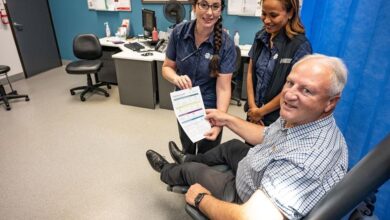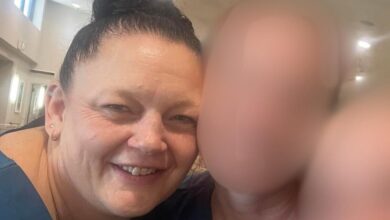Treating a hidden issue
The often hidden issue of incontinence can be treated, improved and often cured, writes Anne Ramus.
A much-quoted statistic is “one in three women who ever had a baby wet themselves”. When it comes to bladder or bowel control problems, our community’s biggest incontinence high-risk group is new mothers.
Women are much more likely than men to develop an incontinence problem: the most common cause of urinary incontinence is the strain on the pelvic floor related to both pregnancy and actual delivery.
In older women, stress incontinence can commonly make a later-life comeback from an earlier pregnancy and childbirth experience. This recurrence is often post-menopause when lower oestrogen levels affect muscle tone.
This type of incontinence - stress incontinence - relates to the downward pressure on the pelvic floor weakening the muscles essential for good bladder and bowel control. These muscles are also involved in sexual function and response.
A related issue, particularly for women, is being overweight. Just as pregnancy and childbirth can strain and weaken the pelvic floor, so does carrying extra body-fat. Recent research points to a weight loss as little as 5kg significantly improving or curing an incontinence problem for many women.
Along with the type 2 diabetes risk for control problems (due to diabetic neuropathy), it’s even more important that women keep their weight at a recommended healthy level for height and age.
Further, chronic constipation can also affect pelvic floor muscle strength due to straining to pass bowel motions, or to an over-full bowel pressing on the bladder, making it unstable or smaller in capacity. In addressing urinary incontinence, resolving constipation is a first step.
For men, a common cause of urinary symptoms is Benign Prostatic Hypertrophy (BPH). Problems such as starting a urine flow, incomplete emptying, annoying after-dribble, perhaps recurring urinary tract infections, straining to empty, and nocturia (getting up several times during the night to visit the toilet) can become increasingly common as men get older.
The natural swelling of the prostate gland, surrounded by the urethra, can restrict urine flow and lead to LUTS (Lower Urinary Tract Symptoms). It’s important to alert men to this possibility, as well as to the possibility of incontinence following surgery for a prostate-related problem.
There is evidence to suggest that many men are actually more worried about the possibility of incontinence post-surgery than that tirelessly publicised glamour health topic of erectile dysfunction.
Incontinence can languish in the background of many other health conditions. For this reason, at-home carers can be grappling with it, often at a high level. It’s easy to understand that the medical focus is on the primary health challenge, yet incontinence is a health condition equally deserving of clinical attention. Diabetes, heart and prostate problems, stroke or cancer, post-surgical and neurological-related incontinence (for example MS, Parkinsons, spinal injury) are common, continence-linked co-morbidities.
For both your male and female clients, pro-actively asking them questions about their bladder and bowel function, and offering an opportunity to talk about their control issues in a meaningful way, is an important healthcare strategy. It can open the way to significantly improving a client’s quality of life. It is not surprising that incontinence can be a cause or contributor to depression.
A good first step can be as simple as encouraging a client to call the National Continence Helpline (free call 1800 33 00 66). The Continence Foundation of Australia manages this free and confidential service for the federal government.
The helpline is staffed by continence nurse advisors who take calls from consumers of all ages, from childhood bedwetting through to aged care. Many callers are health professionals phoning on behalf of their clients. The helpline’s advisors offer information about management strategies, treatment options, products and where to source these, eligibility for product funding assistance, and details of local continence services.
It also offers a large range of resources about bladder and bowel function that can be ordered free and in quantity for your clients - sample resources and order forms are available by calling the Helpline.
The often hidden issue of incontinence is a widespread hidden health issue that can be treated, improved and often cured – at any age - using a range of strategies. Based on a comprehensive continence assessment, these can include simple, at-home approaches, a pelvic floor muscle strengthening program guided by a continence (pelvic floor rehabilitation) physiotherapist, bladder training, or various types of surgery.
Because incontinence is usually a complex health issue with an interaction of several factors, a thorough and individual assessment is a sound basis for effective treatment and better management which can be reviewed as a client’s, and a carer’s, needs change.
Anne Ramus is projects officer at the Continence Foundation of Australia.
Email: [email protected]





